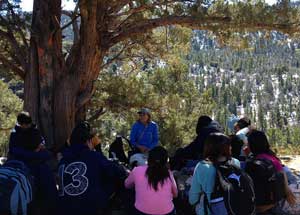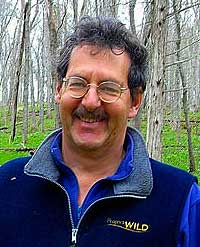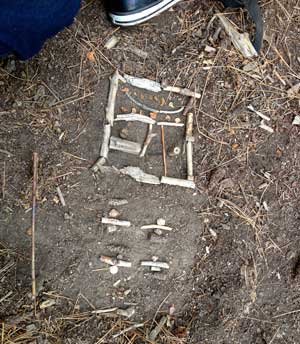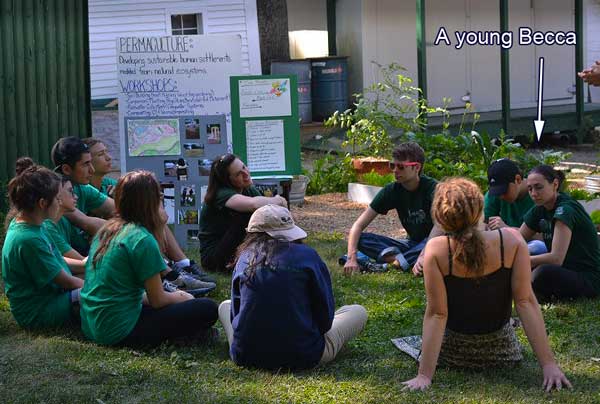Place-based education is the process of using the local community and environment as a starting point to teach concepts in language arts, mathematics, social studies, science, and other subjects across the curriculum. Emphasizing hands-on, real-world experiences, this approach to education increases academic achievement, helps students develop stronger ties to their community, enhances students’ appreciation for the natural world, and creates a heightened commitment to serving as active, contributing citizens.
 In “Place-based Education: Connecting Classrooms and Communities,” author David Sobel makes a compelling argument for a change in our education system that enables students to draw connections to the community in which they are a part of. Place-based education, according to Sobel doesn’t just involve learning about a local community, but allows students to get out of the classroom and actively participate in what is happening in their surrounding: culturally, politically, and environmentally. Unlike education today where students begin their knowledge on the macro level out of a text (astronomy in third grade), students start learning at the micro-level, within their own communities, and continue moving outward and upward as they grow older, consistently adding to what they know and making even larger connections between societies and the world.
In “Place-based Education: Connecting Classrooms and Communities,” author David Sobel makes a compelling argument for a change in our education system that enables students to draw connections to the community in which they are a part of. Place-based education, according to Sobel doesn’t just involve learning about a local community, but allows students to get out of the classroom and actively participate in what is happening in their surrounding: culturally, politically, and environmentally. Unlike education today where students begin their knowledge on the macro level out of a text (astronomy in third grade), students start learning at the micro-level, within their own communities, and continue moving outward and upward as they grow older, consistently adding to what they know and making even larger connections between societies and the world.
This book, printed in 2004 and 2005 as part of the Orion Society’s Nature Literacy Series, gives ample examples of programs, schools, and districts across the nation in which place-based education takes priority over traditional learning and has been successful.
For instance, “The Bioregional Outdoor Education Project is a program of the Four Corners School of Outdoor Education, which recently completed its two-year pilot program with four school districts in the Four Corners region of Colorado, Utah, Arizona, and New Mexico.” – “The program utilizes roving educators to help teachers and students bring their curriculum out into the landscape and community.” (http://www.fourcornersschool.org/)
 Another program mentioned is the Food Systems Project in Berkeley, California. They work with the US Department of Agriculture’s Linking Farms to School’s Initiative, the CA Department of Health, and the Center for Ecoliteracy. At the time of publication, the goal was to have all the food in the Berkeley school lunch programs produced organically and locally within the decade. Just four years into the program, 15 of 17 Berkeley Unified Schools had school gardens, and six of those gardens were producing vegetables for school consumption.
Another program mentioned is the Food Systems Project in Berkeley, California. They work with the US Department of Agriculture’s Linking Farms to School’s Initiative, the CA Department of Health, and the Center for Ecoliteracy. At the time of publication, the goal was to have all the food in the Berkeley school lunch programs produced organically and locally within the decade. Just four years into the program, 15 of 17 Berkeley Unified Schools had school gardens, and six of those gardens were producing vegetables for school consumption.
Berkeley Unified School District Food Policy
“The BUSD Board of Education recognizes the important connections between a healthy diet and a student’s ability to learn effectively and achieve high standards in school. The Board also recognizes the school’s role, as part of the larger community, to promote family health, sustainable agriculture and environmental restoration. BUSD’s educational mission is to improve the health of the entire community by teaching students and families ways to establish and maintain lifelong healthy eating habits through nutrition education, experiences in the garden and the food served in schools.”
 Place-based educators want to advocate for an integrated curriculum that emphasizes project-based learning, teacher collaboration, and extensive use of community resources and volunteers. At High Trails, our programming works hard to connect our curriculum to a student’s life back home. But we don’t actually drive down the mountain to continue the experience with our students at any of our 120+ elementary schools. I began thinking more critically about the community aspect of our program; Sobel links place-based education with environmental education on many accounts. The two have the potential to work hand in hand, but there are many factors involved in order to have a successful relationship between the two.
Place-based educators want to advocate for an integrated curriculum that emphasizes project-based learning, teacher collaboration, and extensive use of community resources and volunteers. At High Trails, our programming works hard to connect our curriculum to a student’s life back home. But we don’t actually drive down the mountain to continue the experience with our students at any of our 120+ elementary schools. I began thinking more critically about the community aspect of our program; Sobel links place-based education with environmental education on many accounts. The two have the potential to work hand in hand, but there are many factors involved in order to have a successful relationship between the two.

Book author David Sobel
I kept reading about situations where a school or program worked directly with an environmental education center to bring programming back into the community. There were projects where students built greenhouses or tested nearby water sources. Classrooms worked with local businesses and agencies to combine environmental awareness and economics in their community.
I believe in our program at High Trails, but I have walked away from reading this book with a new perspective on how my teaching can be used back where I orginally come from. I want to create new ways to engage my students and ideas for which to reconnect their communities and my lessons.

Recently, I have been thinking about education on a larger, more pedagogical scale. I have decided that eventually I would really like to get my PhD in education, but I’m not entirely sure what that means. What type of educator do I want to be? Why is education important? What can I do to change it or make a difference in education? These are all questions that occurred to me while I was reading. I became aware of my passion for interdisciplinary studies and connecting our environment to the classroom during my graduate studies, and this book only fueled my interests and desire to pursue education.
Although this is a non-fiction book, it is an extremely compelling and engaging read. It gives me hope that our education system can be different. Sobel’s research proves that by taking students out of the classroom and engaging them in hands-on learning and problem solving within a community, test scores will go up, and knowledge will be gained.
There is so much to learn from place-based education and so much an individual, classroom, and school can do to enrich a community. Sobel ends his book with an example of how economics and environmental sustainability can be achieved through place-based education and the quote, “Isn’t there a similar project waiting to happen in your neighborhood?” My response, indeed, I believe there is.

At High Trails Outdoor Science School, we literally force our instructors to write about elementary outdoor education, teaching outside, learning outside, our dirty classroom (the forest…gosh), environmental science, outdoor science, and all other tree hugging student and kid loving things that keep us engaged, passionate, driven, loving our job, digging our life, and spreading the word to anyone whose attention we can hold for long enough to actually make it through reading this entire sentence. Whew…. www.dirtyclassroom.com

Comments are closed.